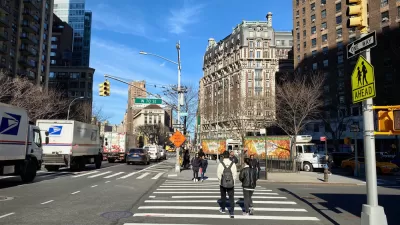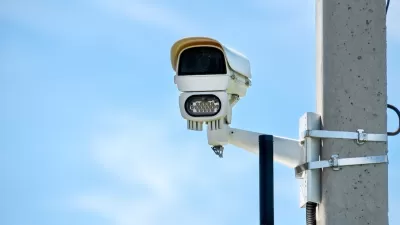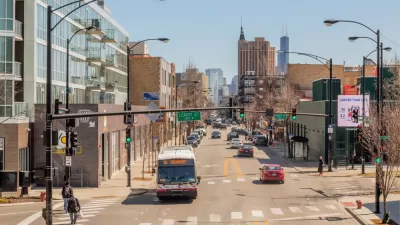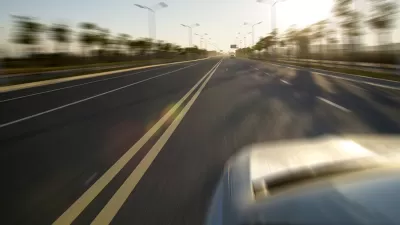New research suggests that fewer speeding tickets are issued in neighborhoods where the city has invested in traffic calming and pedestrian safety improvements.

A study from New York City indicates that, while automated traffic enforcement cameras are evenly distributed across the city's neighborhoods, safe roadways and pedestrian infrastructure are not. As Julianne Cuba and Brian Howald report, "A new map created by activist Brian Howald shows where in the city drivers are getting nabbed for speeding in school zones and blowing through red lights, revealing a pattern of inequity not based on the location of the cameras themselves, but where the city has failed to provide adequate infrastructure that protects vulnerable road users."
Yes, the cameras are evenly distributed geographically in the city, but many tickets are issued in many communities of color because of the wide, speedway-like arterials that cut through such neighborhoods, and which have not been redesigned by the city for safety as they have been in White neighborhoods. The result is not only many speeding tickets written in communities of color, but also that residents of those neighborhoods are disproportionately the victims of road violence, advocates say.
This sheds light on the controversial devices and the argument over whether they unfairly target particular communities, signaling that, as pointed out in a recent ProPublica article, infrastructure—such as wide streets that encourage speeding—matters when it comes to driver behavior and road safety. Cuba and Howald's article quotes lawmakers and activists who want to see automated enforcement coupled with investment in safer roadways. "Such senseless deaths unfortunately happen far too often in our city, but they can be easily prevented with investment in more protective pedestrian and bicycle infrastructure," wrote state Senator Julia Salazar last year.
FULL STORY: Are Speed Cameras Racist?

Study: Maui’s Plan to Convert Vacation Rentals to Long-Term Housing Could Cause Nearly $1 Billion Economic Loss
The plan would reduce visitor accommodation by 25,% resulting in 1,900 jobs lost.

North Texas Transit Leaders Tout Benefits of TOD for Growing Region
At a summit focused on transit-oriented development, policymakers discussed how North Texas’ expanded light rail system can serve as a tool for economic growth.

Using Old Oil and Gas Wells for Green Energy Storage
Penn State researchers have found that repurposing abandoned oil and gas wells for geothermal-assisted compressed-air energy storage can boost efficiency, reduce environmental risks, and support clean energy and job transitions.

Santa Barbara Could Build Housing on County Land
County supervisors moved forward a proposal to build workforce housing on two county-owned parcels.

San Mateo Formally Opposes Freeway Project
The city council will send a letter to Caltrans urging the agency to reconsider a plan to expand the 101 through the city of San Mateo.

A Bronx Community Fights to Have its Voice Heard
After organizing and giving input for decades, the community around the Kingsbridge Armory might actually see it redeveloped — and they want to continue to have a say in how it goes.
Urban Design for Planners 1: Software Tools
This six-course series explores essential urban design concepts using open source software and equips planners with the tools they need to participate fully in the urban design process.
Planning for Universal Design
Learn the tools for implementing Universal Design in planning regulations.
Ascent Environmental
Borough of Carlisle
Institute for Housing and Urban Development Studies (IHS)
City of Grandview
Harvard GSD Executive Education
Toledo-Lucas County Plan Commissions
Salt Lake City
NYU Wagner Graduate School of Public Service





























